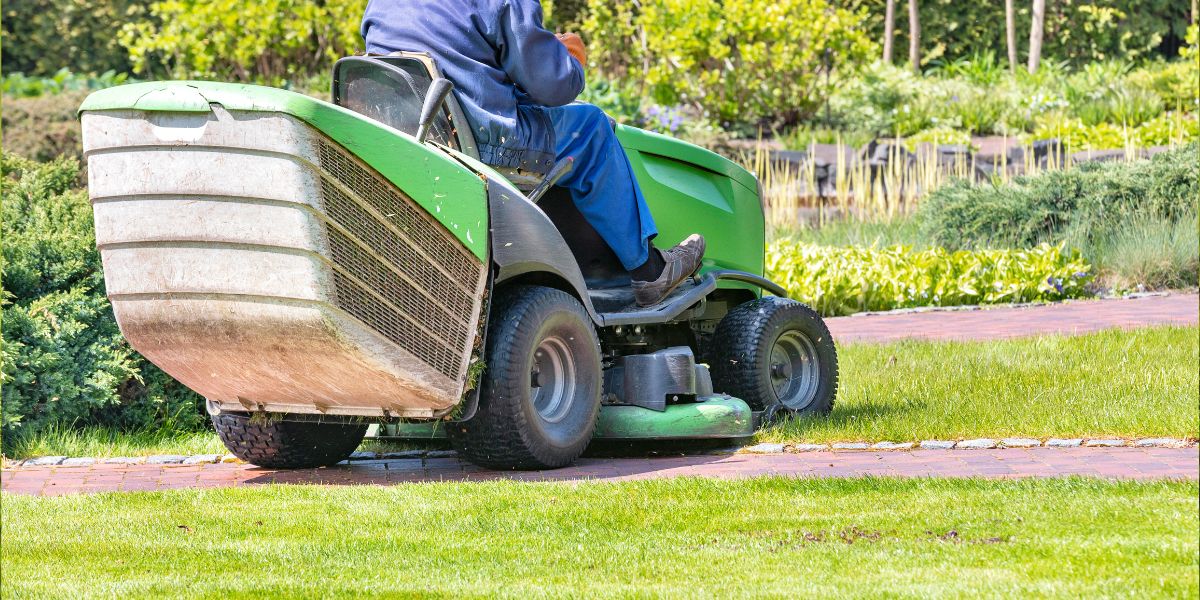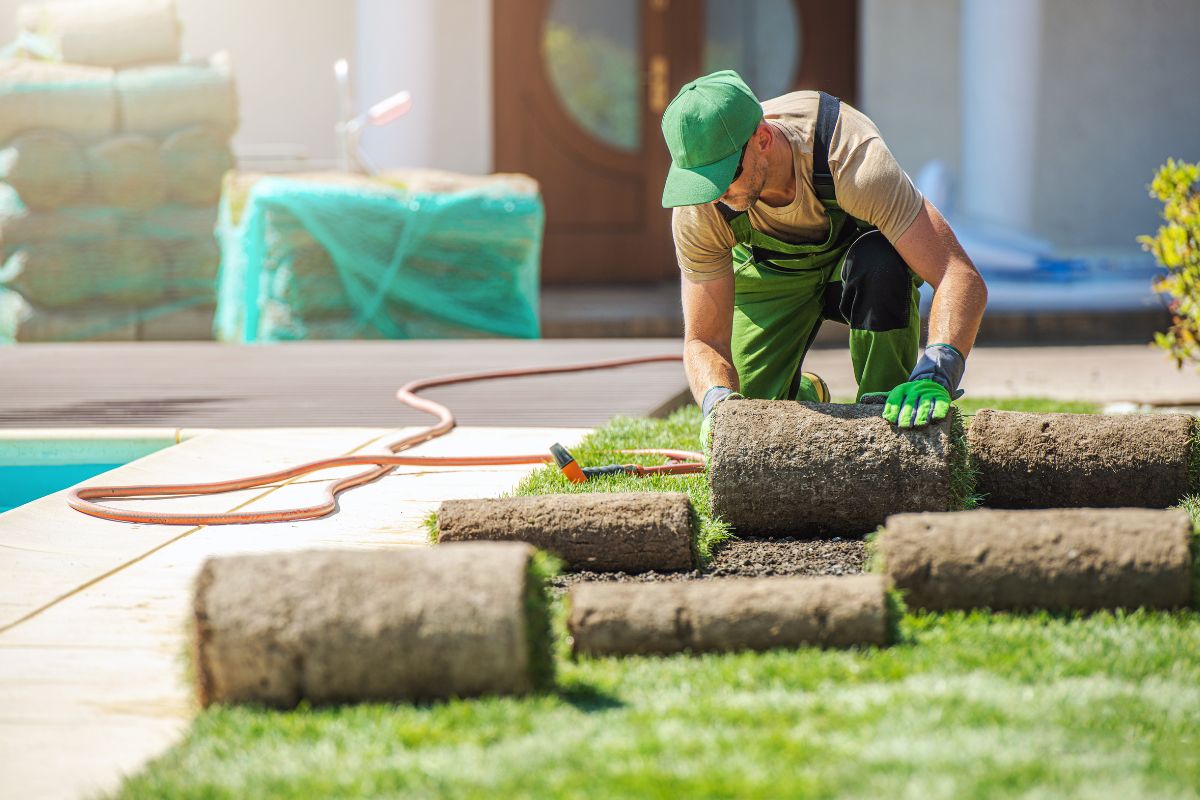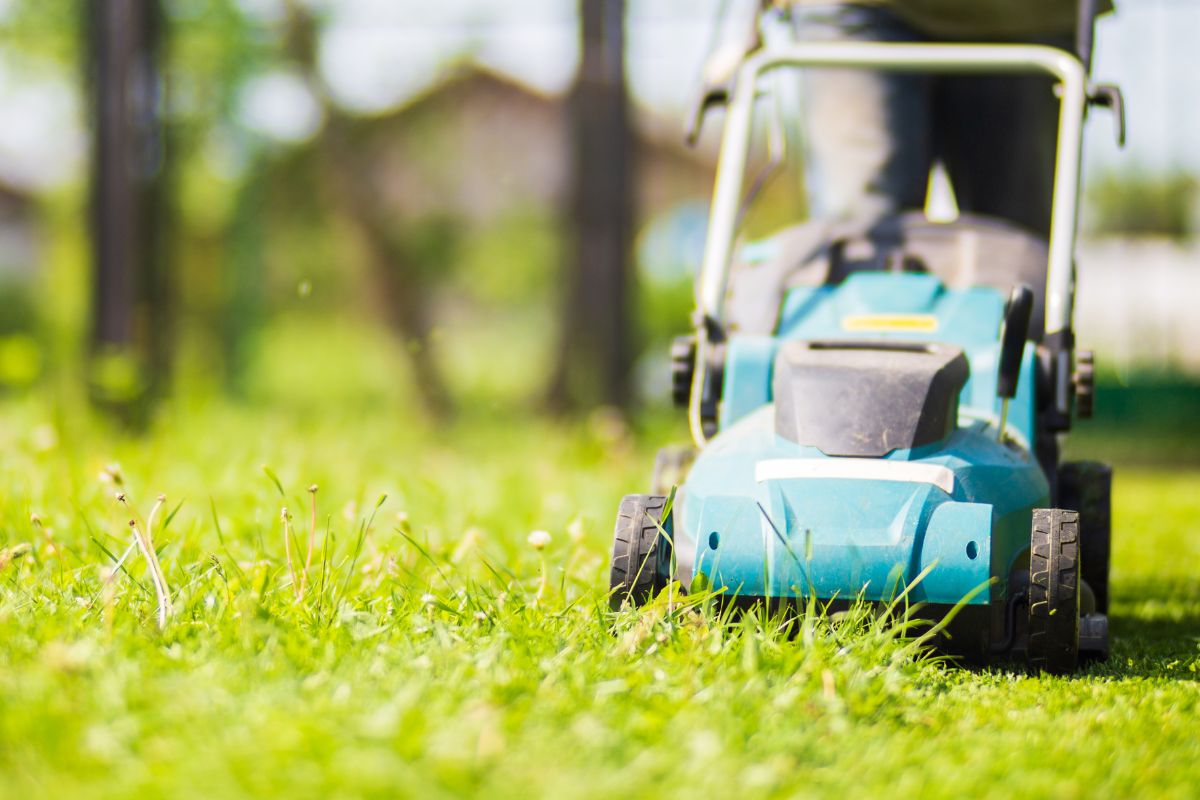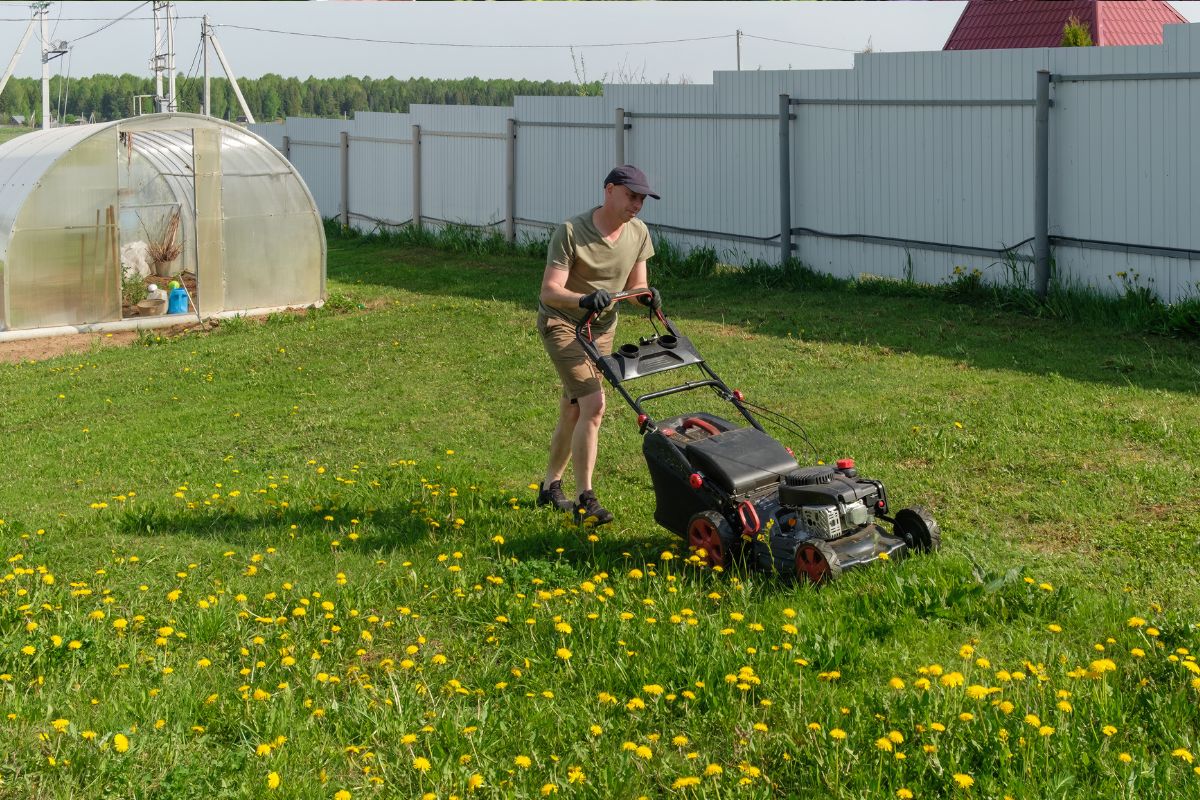Get free quotes within minutes
How to Top Dress a Lawn: Improve Soil Health and Lawn Growth

Table Of Content
- Introduction
- What is Lawn Top Dressing?
- Why Your Lawn Need Top Dressing
- Best Time to Top-dressing Lawn
- Appropriate Material for Top Dressing
- How to Estimate Top Dressing Material Quantities
- Steps to Top Dress Your Lawn
- Lawn Top Dressing: DIY vs Professionals
- Common Questions About Top Dressing Your Lawn
- Conclusion
Maintaining the lawn through top dressing improves grass health and appearance. It's a method by which sand/topsoil/compost or a mix of similar is piled onto the surface. It smooths lumps, provides the soil with nutrients, and promotes strong, thick grass.
Financially, top dressing can lead to cost savings by reducing the need for frequent watering and minimizing the reliance on chemical fertilizers. The organic matter in the topdressing helps the soil retain moisture, thereby decreasing water consumption.
While specific data on the prevalence of top dressing among homeowners is limited, the practice is gaining recognition for its effectiveness in lawn care. Many lawn care enthusiasts and professionals recommend top dressing as a beneficial maintenance practice to promote a lush and healthy lawn.
Learn here how to top dress a lawn effectively, the costs incurred, and what's expected from the activity.
What is Lawn Top Dressing?
Top dressing is putting down a thin spread of sand, compost, or topsoil on the lawn. It enhances soil quality, fills uneven spots, and improves grass health. By adding organic matter and nutrients, you’ll see greener and thicker grass.
This procedure saves the grassroots and increases the soil's capacity to retain water. It increases the drainage efficiency of the soil, thereby not causing waterlogging. Top dressing helps maintain the health of your lawn with periodic treatments rather than frequently giving fertilizers to the grass.
The cost of top dressing varies based on lawn size and materials used. For instance, purchasing compost in bulk is generally more economical than bagged options. One user reported a quote of $3,600 for top-dressing a lawn with 30 yards of compost. However, costs can be managed by sourcing materials wisely and considering DIY application methods.
Why Your Lawn Need Top Dressing
Top dressing helps in the proper drainage, suppresses weeds, and provides essential nutrients. Uneven lawns and poor soils can greatly benefit from this practice.
- Improve Soil Quality: The gardens/lawns left unmaintained are typically troubled by problems of poor drainage, and lower soil quality resulting in weed and disease infestation. When a thin topsoil layer is added to the surface, the surface irregularities are reduced and thus the quality of the soil is increased.
- Fix Poor Drainage: Waterlogging due to poor drainage makes lawn vulnerable to damage. Top dressing with suitable materials counteracts these problems. It invigorates grass growth by providing grass with essential nutrients.
- Fix Damage: You can find and make repairs to any areas damaged by pests, heavy foot traffic, or weather.
Not dressing your lawn is required if this is in its best condition; however, once the lawn presents itself as somehow dull or possibly draining, one of the solutions for rejuvenation is through its utilization as an effective system.
Best Time to Top-dressing Lawn
There's one critical element, however, where timing is all for successful top dressing. The proper time to apply top dressing also depends on the grass type. The warm-seasoned grasses grow best when receiving this top dressing towards the end of spring or the start of the summer season. Cool-season grasses, for example, are favoured more when receiving such a top dressing by the early autumn seasons.
Top dress during winter and grass is not actively growing because this could easily damage the lawn to its maximum levels or kill the grass completely. Avoid applying during heavy rains, as top dressing becomes an even more difficult task due to wetness.
For younger than six months, do not apply a top dressing since young lawns may be injured with such treatments easily due to shallowness in root distribution. Target already matured grass lawns to gain optimal top dressing.
Appropriate Material for Top Dressing
Choosing the correct material is essential for effective top dressing. The material should closely match the soil in your lawn to avoid layering problems. Here are the common top dressing materials and their benefits:
- Sand: Sand is ideal for improving drainage in clay-heavy soils. A 70% sand and 30% soil mix works best. Avoid using pure fine sand over coarse soils.
- Topsoil: Topsoil similar to your existing soil will fill in the uneven areas but does not contain organic nutrients. You may mix it with compost for added benefits.
- Compost: High-quality organic compost is the best choice. It enriches the soil with nutrients and supports good microorganisms.
- Blended Mixes: The ability to blend sand, compost and topsoil, and make a suitable mix for your soil, will certainly be useful. It is cost-effective and versatile.
You can source these materials at nurseries, garden centres, or landscaping suppliers. The compost should be well-decomposed with no fillers.
How to Estimate Top Dressing Material Quantities
Multiply your lawn area times your desired depth of material to find the volume of cubic yards. For instance, to finish 1,000 ft(2) at 1/8 in deep, you need to supply 0.40 cubic. Use the following formula:
Area (length × width) × Depth = Volume (cubic yards)
Do not apply too much material, as this will suffocate the grass. Always ensure grass tips remain visible after application of the top dressing.
Steps to Top Dress Your Lawn
To top-dress or perform top soiling on your lawn effectively, follow these steps:
Step 1: Prepare the Lawn
Have the soil analyzed for pH, and amend, if necessary to have a pH between 6.0 and 7.5. Cut weeds, grass clippings, and litter to provide free lawn floor space. If lawn drainage is weak, aerate with a power rake or an aerator.
Lawn mowing is an essential first step in preparing your yard. Mow your lawn as short as possible without damaging the grass. Sweep up grass clippings with a catcher and remove them from the surface. Aerating will loosen the soil to allow for deeper penetration by the top dressing.
Step 2: Application of Fertilizers
Apply fertilizers to your lawn some weeks before the top dressing. This will allow more growth of grass and be perfect for nutrient uptake of the top dressing. Use a spreader to spread evenly over your lawn, and water the lawn afterwards.
Step 3: Spread the Top Dressing
Move the top dressing material using a wheelbarrow. Work in small sections spreading evenly over the lawn. Work at a depth of 1/8 to 1/2 inch. Do not cover the tips of the grass to allow for continued photosynthesis.
Level it using a rake or soil spreader. Even it is out, so there are no clumps or uneven layers. For deep holes, fill them with backfilling before applying the top dressing. It prevents overloading one area and harming the grass.
Step 4: Water the Lawn
Water your lawn immediately after top dressing. This way the material will settle into the soil and increase new growth. Spray lightly so it does not wash away the material.
Step 5: Recovery Time
Allow your lawn to recover and grow. Do not mow for one to two weeks following top dressing. Check the lawn's growth and monitor changes in your irrigation.
Tips for Uneven Lawns and Problem Areas
Apply top dressing selectively to fill holes or level out uneven areas. Fill gaps lightly, leaving grass tips visible. For deeper holes, backfill with top dressing material before levelling. Avoid overapplication of material since thick layers may harm your lawn.
One suggested pre-existing procedure before applying top dressing is the aeration of lawns to avoid pushing the soil further. Overseed bare spots to encourage new grass growth. Prune and water well to obtain all the benefits of top dressing.
How Much Lawn Top Dressing Cost
Top dressing cost is dependent on top dressing material, top dressing labour, and lawn size. It is low cost but time-consuming when done DIY. Hiring a professional is costlier, though the final product will be better. Here is the breakdown of cost:
- Material Costs: Sand, topsoil, and compost will vary in price based on where you live and what quality you buy. You should expect to pay 20 to 50 dollars per cubic yard for compost and 15 to 40 dollars for sand or topsoil.
- Tools and Equipment: When you do it yourself, you'll need a wheelbarrow, rake, and aerator. A motorized spreader costs 50 to 150 dollars per day to rent.
- Labour Costs: Professional top dressing ranges from $100 to $500 depending on lawn size and type of material.
For a 1,000 sq ft lawn at a thickness of 1/4 in, the material will cost $100. Adding labour would lift the price from $150 to $600.
Lawn Top Dressing: DIY vs Professionals
Top dressing is a cheaper DIY method, but it consumes time and is laborious. It will be costly if equipment is hired. Gardening experts are efficient and experienced and thus yield a better result in the case of bigger or more complicated lawns. Choose the option that best fits your pocket and lawn size.
Benefits of Top Dressing Your Lawn
Top dressing offers several benefits in enhancing the health and appearance of your lawn. Organic matter enhances water retention in soil and unlocks nutrients for the soil. It levels out the terrain, breaks up thatch, and promotes microbial activity that will help long-term soil health.
By improving drainage, top dressing reduces the risk of waterlogging. This creates a healthier environment for grass to thrive. Over time, you’ll notice a greener, more vibrant lawn that requires less maintenance.
Common Mistakes to Avoid
Do not commit common mistakes when applying top dressing. Overapplying the material may cause smothering to the grass. The material applied should be like your soil. Applying at the wrong season or without proper preparation will harm your lawn. Watch every step and observe your lawn's response.
Common Questions About Top Dressing Your Lawn
If you're new to top dressing or looking to fine-tune your lawn care routine, you might have some specific questions in mind. Below are some of the most frequently asked questions to help guide you through the process and ensure you get the best results for your lawn:
- How do you topdress a lawn step by step?
- How much top dressing do you need based on lawn size and condition?
- How can you improve your lawn soil for better grass growth?
- What are the best top dressing materials to use for different lawn goals?
- When and how often should you top dress for the best results?
- What is the best time of year to top dress your lawn?
- How much sand should be used in a topdressing mix?
- What does topdressing actually do for your lawn's health?
- How thick should the topsoil layer be for growing healthy grass?
Whether you're aiming for thicker grass, better soil structure, or improved drainage, understanding these key points can make all the difference in achieving a lush, healthy lawn.
Conclusion
Top dressing is an important way to reclaim your lawn; it will add beauty by improving soil fertility, faster grass growth, and solving drainage-related problems. One can get his lawn lush and green using quality materials and accurate steps. Use the DIY solution or hire an expert; be assured that top dressing will add something to your precious outdoor space in terms of looks and value in the long term. Plan well, calculate your expenditure and be happy with the returns of a healthy and fabulous lawn.
YOU MIGHT ALSO BE INTERESTED IN

How to Install Artificial Grass: A Complete DIY Grass Installation Guide

How to Get Rid of Nut Grass? - Effective Methods for a Clean Lawn











